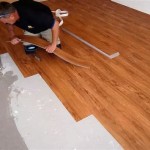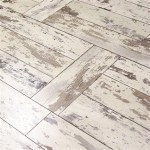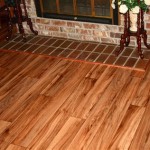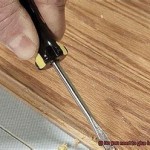Anderson Hardwood Flooring Reviews: A Comprehensive Analysis
Anderson Hardwood Flooring, a brand under the Shaw Industries umbrella, has been a player in the hardwood flooring market for decades. Understanding the nuances of their product offerings, quality, and customer experiences is paramount for anyone considering their flooring options. This article provides a detailed analysis of Anderson Hardwood Flooring reviews, examining key aspects that potential buyers should consider.
The scope of this analysis includes an overview of the Anderson Hardwood product lines, a deep dive into the factors contributing to positive and negative reviews, a comparison with competitor brands, and crucial considerations when deciding if Anderson Hardwood Flooring is the right choice for a given project. The information presented is intended to provide a balanced perspective, drawing from a variety of sources including customer testimonials, professional reviews, and technical specifications.
Understanding Anderson Hardwood Flooring Product Lines
Anderson Hardwood Flooring offers a range of hardwood products, encompassing both solid hardwood and engineered hardwood options. Solid hardwood comprises single pieces of wood, providing a classic, durable flooring surface. Engineered hardwood, on the other hand, consists of multiple layers, with a hardwood veneer atop a core of plywood or other composite materials. This construction often provides greater stability and resistance to moisture and temperature fluctuations compared to solid hardwood.
Within these categories, Anderson offers diverse species options, including oak, maple, hickory, and walnut, each offering unique grain patterns, colors, and hardness levels. The Janka hardness scale, a measure of wood’s resistance to denting and wear, is a key factor to consider when selecting a hardwood species. Oak, for example, is a common and relatively durable choice, while softer woods like pine are more susceptible to damage. Anderson provides Janka ratings for their various species, which can be helpful in making informed decisions.
Furthermore, Anderson Hardwood offers a variety of finishes and styles. Traditional smooth finishes, hand-scraped textures, and distressed looks are all available. The finish not only affects the visual appearance of the floor but also its resistance to scratches, staining, and wear. Polyurethane finishes are commonly used for their durability, while oil-based finishes offer a more natural look and feel but may require more frequent maintenance.
A crucial aspect of product lines is also the plank dimensions. Anderson offers varying widths and lengths, impacting the overall aesthetic and the installation process. Wider planks can create a more contemporary look, while narrower planks evoke a more traditional feel. Longer planks can minimize the number of seams, contributing to a cleaner, more seamless appearance.
The availability of different grades of hardwood is another dimension to consider. Grading refers to the visual consistency and the presence of knots, mineral streaks, and other natural characteristics in the wood. Clear grades have minimal imperfections, while character grades feature more prominent knots and variations, adding to a rustic aesthetic. The grade chosen significantly impacts the floor's appearance and often its price.
Analyzing Factors Influencing Positive and Negative Reviews
Customer reviews of Anderson Hardwood Flooring are influenced by several factors, ranging from the quality of the product itself to the installation process and customer service experiences. Positive reviews often highlight the beauty and durability of the flooring, particularly when proper installation and maintenance are followed. Customers may praise the aesthetic appeal, the longevity of the product, and the ease of cleaning.
However, negative reviews frequently cite issues related to installation problems, such as warping, cupping, or gapping. These problems often stem from improper acclimation of the wood prior to installation, inadequate subfloor preparation, or incorrect installation techniques. Hardwood flooring is sensitive to moisture levels, and failure to properly control humidity can lead to significant problems after installation.
Another common source of negative feedback involves the durability of the finish. Some customers report that the finish scratches or wears prematurely, particularly in high-traffic areas or with pets. This may be due to a variety of factors, including the specific finish used, the level of foot traffic, and the presence of abrasive particles such as sand or dirt. Selecting a finish appropriate for the intended use and implementing proper cleaning and maintenance practices are crucial to preserving the floor's appearance.
Customer service experiences can also significantly impact reviews. Delayed responses, difficulty resolving issues, and unsatisfactory warranty claims can all contribute to negative feedback. Conversely, prompt and helpful customer service can turn a potentially negative experience into a positive one. The responsiveness and helpfulness of the retailer or installer also play a critical role in shaping customer perceptions.
It's important to consider the context of customer reviews. Online reviews represent a snapshot of individual experiences, and it's impossible to verify the accuracy or completeness of every review. Reading a wide range of reviews and considering the factors that may have influenced those experiences can provide a more balanced perspective. Consulting with professional flooring installers and reading expert reviews can also offer valuable insights.
Comparing Anderson Hardwood Flooring with Competitors
The hardwood flooring market is competitive, with numerous brands offering a wide range of products and price points. Comparing Anderson Hardwood Flooring with competitors such as Bruce, Armstrong, and Mohawk can provide valuable context for evaluating its strengths and weaknesses.
Bruce Hardwood Flooring is a well-established brand known for its affordability and wide availability. Bruce offers a variety of solid and engineered hardwood options, often at a lower price point than Anderson. However, some reviewers suggest that Bruce's quality may not be as high as Anderson's, particularly in terms of finish durability and consistency of grading.
Armstrong Flooring offers a diverse range of flooring products, including hardwood, laminate, and vinyl. Armstrong's hardwood options are generally considered to be of good quality, and they offer a variety of styles and finishes. Armstrong's customer service is generally regarded as being more responsive compared to some other brands. However, Armstrong products might be priced relatively higher than Anderson flooring.
Mohawk Industries is another major player in the flooring market, offering a wide range of hardwood, laminate, and carpet products. Mohawk's hardwood options are generally comparable to Anderson's in terms of quality and price. Mohawk offers a wide range of styles and finishes, including innovative technologies such as waterproof hardwood options. The breadth of Mohawk’s offerings can be an advantage for consumers looking for a one-stop shop for all their flooring needs.
When comparing brands, it's important to consider factors such as product quality, price, warranty coverage, customer service, and availability. Reading independent reviews and consulting with flooring professionals can help in making an informed decision. It's also crucial to compare specific product lines and models rather than generalizing about entire brands, as quality and features can vary significantly within each brand's offerings.
One area where Anderson has been focusing is in sustainable forestry practices. They are trying to incorporate more eco-friendly practices during the manufacturing of their flooring products. Potential buyers who are environmentally conscious may prioritize Anderson because of this feature.
Warranty coverage is another important point of comparison. Anderson, like other manufacturers, offers warranties on its products, covering defects in materials and workmanship. However, the specific terms and conditions of the warranty can vary. It's crucial to carefully read the warranty document to understand what is covered and what is not. Factors such as proper installation and maintenance are typically required to maintain warranty coverage.
Ultimately, the best hardwood flooring brand for a given project depends on the specific needs and preferences of the buyer. Factors such as budget, style preferences, durability requirements, and installation conditions all play a role in the decision-making process. A thorough assessment of these factors, combined with careful research and consultation with professionals, is essential for selecting the right flooring solution.

Anderson Hardwood Flooring Imperial Pecan Lifetime Residential Warranty

Anderson Wood Floors A Company Overview And Review Woodfloordoctor Com

Magnus Anderson Hardwood Floors Updated April 2024 84 Photos 18 Reviews 3000 Airport Dr Erie Colorado Flooring Phone Number Yelp

Anderson Tuftex Bernina Hickory 5 Fora Greenflooringsupply Com

Anderson Tuftex Vintage Maple Heritage Mixed Width Engineered Hurst Hardwoods

Anderson Hardwood Flooring Imperial Pecan Lifetime Residential Warranty

Magnus Anderson Hardwood Floors Updated April 2024 84 Photos 18 Reviews 3000 Airport Dr Erie Colorado Flooring Phone Number Yelp

Anderson Tuftex Bernina Hickory 5 Fora Greenflooringsupply Com

Anderson Tuftex Hardwood Coastal Art Red Oak Ii Pickle Barrel Floorzz

Anderson Tuftex Imperial Pecan Antique Hurst Hardwoods
Related Posts








